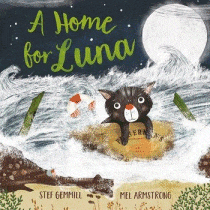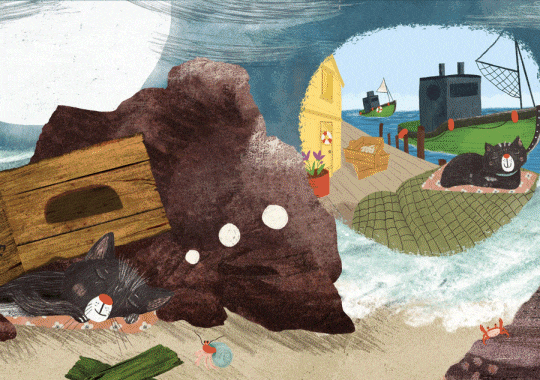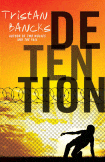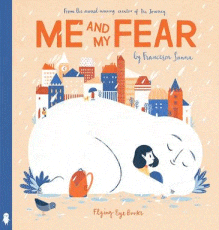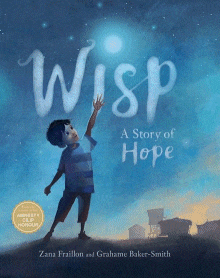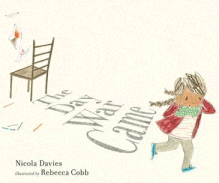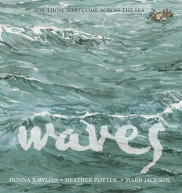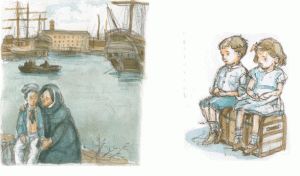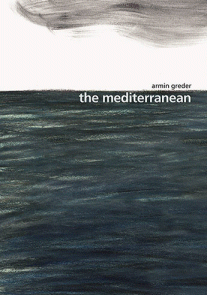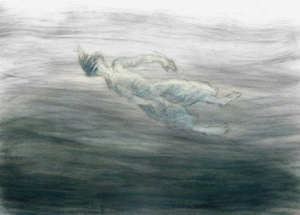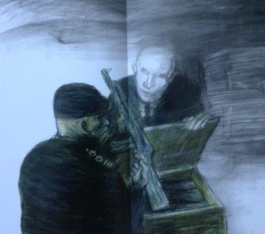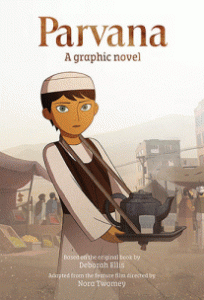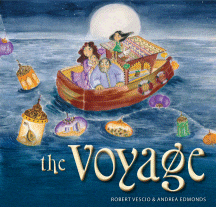
The Voyage
The Voyage
Robert Vescio
Amanda Edmonds
EK Books, 2019
32pp., hbk., RRP $A24.99
9781925820034
Fourteen words. If books were priced based on the number of words the story had, then you would probably ask for your money back with this one, but those 14 words document a life-changing episode in one family – a family that could be any one of a number of those whose children we teach and will teach as conflict continues to circle the world. Just fourteen words to tell such a story that are more powerful than if there were 10 or 100 times that many.
War displaces the family and their pet duck and so they must escape on a boat into the unknown. At first there is the CHAOS of the conflict; then there is the WILD ocean as a storm tosses the boat and overturns it;but BEAUTY awaits as they finally sight land ahead and at last they are SAFE.
But words alone are not enough and it is the remarkable and powerful watercolour illustrations that meld with those 14 words to tell an all-too familiar story of despair, hope, courage, resilience and joy. In fact, more mature readers might be able to empathise with the family and retell the story using an emotion for each page, perhaps sparking greater understanding and compassion for their peers who have lived the nightmare. But while those illustrations have strong words to convey, they have soft lines and gentle colours so the humanity and reality of the people is maintained and the reader is not turned off by page after page of darkness.. Again, older students could compare the illustrations and mood of this book with those of the 2019 CBCA Honours Book The Mediterranean.
Accompanying notes tell us that both author and illustrator were driven by the need to tell what is becoming a common story so that there is greater understanding and compassion amongst those whose lives are less traumatic and through that, build stronger, more cohesive communities so that life is better, enriched and enhanced for everyone. Edmonds deliberately chose a Middle Eastern family as her centrepiece because of the richness of the culture so that the reader can appreciate the depth and meaning of what is being left behind – the dilemma of leaving all that is known and loved for the uncertainty of the unknown and the heartache and danger that either choice will bring.
Beyond the storyline itself, this is a book that so clearly demonstrates the critical, integral relationship between text and illustration, that a picture really is “worth a thousand words” , and often the picture book format is the most powerful way to tell a story.
Look for this one in the 2020 awards lists.
